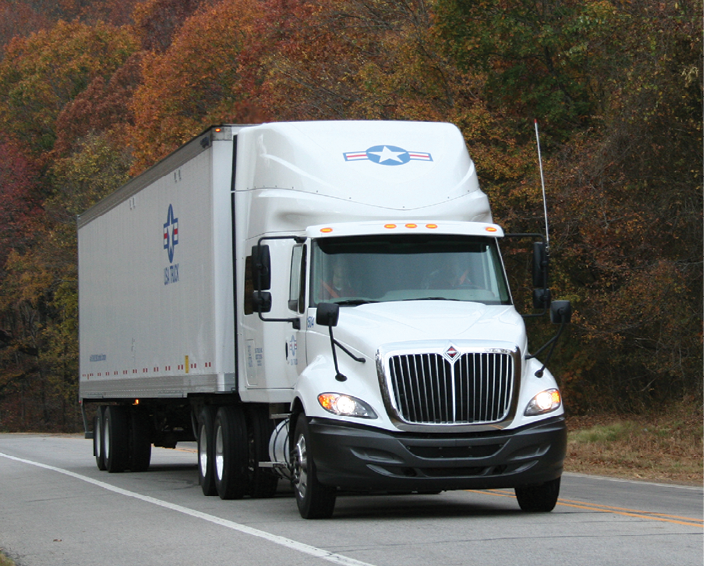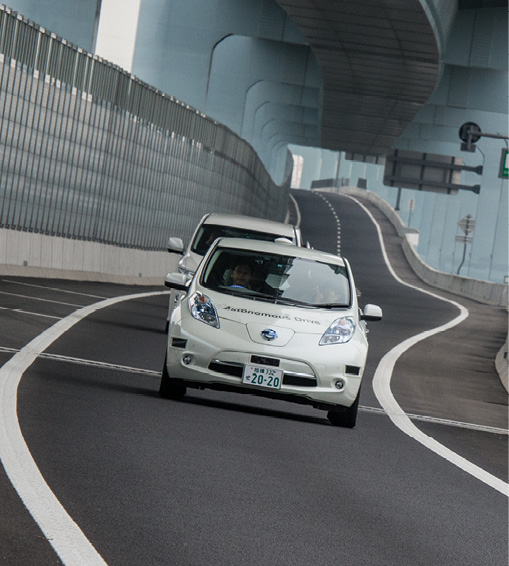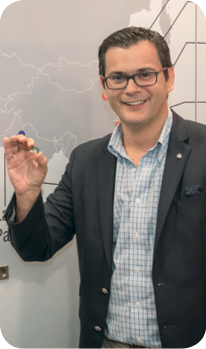
USA Truck
A new manufacturing deal underscores the expansion of u-blox, a manufacturer of wireless communications and positioning chips, into the connected and driverless vehicle market.
The firm, which is headquartered in Thalwil, Switzerland, announced in October it would take over the manufacture and supply of the latest MK5 module for Cohda Wireless. The V2X (vehicle to everything) module enables vehicles to connect with infrastructure and other automotives, potentially improving road safety and energy consumption as well as reducing traffic congestion.
Australia-based Cohda Wireless and u-blox have reached a deal on an exclusive license for the latest MK5 module, which is in demand for trials, early deployments and infrastructure roll outs.
The THEO P1 module is a compact, automotive grade transceiver that facilitates the development of electronics for V2X communication systems. It is based on a 5.9 GHz radio link, a two-way, short range wireless communications technology and is designed to work with vehicles at speeds up to 250 km/h and within a 1,000-meter range. It addresses both equipment within vehicles (OBU On Board Units) and road infrastructure (RSU Road Side Units).
“As this market matures with an increasing number of new deployments, we can offer best of breed V2X solutions composed of our modules to address the requirements of both our automotive and infrastructure equipment customer base,” said Herbert Blaser, u-blox’s senior director for Product Center Short Range Radio. Blaser suggested that V2X technologies would also benefit conventional driver assistance systems.
A month earlier u-blox had introduced a new line of LTE low data rate cellular modules for use in the industrial and automotive markets. The modules support LTE Cat. 1 for Internet of Things (IoT) and machine-to-machine (M2M) applications.
Targeted Acquisitions
u-blox also recently opened a new office in Greece, following the acquisition of Athens-based VC Antcor in 2014. The move expanded the firm’s portfolio of short-range radio products targeting the unmanned road transport systems sector.
“The Greek office has important short-range radio expertise for u-blox and, together with other recent acquisitions, this brings the company closer to realizing its vision of being able to provide all the core wireless technologies needed for autonomous driving,” said Costas Meimetis, director of Product Strategy, Product Center Short Range Radio at u-blox Athens S.A.
Those other acquisitions comprise a long list. In 2009 u-blox acquired Geotate, a satellite navigation software company and Neonseven, a firm with technology targeting mass-market cellular applications including applications in the automotive market. u-blox acquired Fusion Wireless, a provider of CDMA wireless modules for consumer and M2M applications, in 2011 and Fastrax, a firm specializing in a broad range of GNSS positioning and antenna modules in 2012. In 2014 u-blox acquired the Swedish firm connectBlue AB, a maker of industrial grade short-range radio modules with applications in vehicle monitoring and asset tracking systems.
“From GNSS, cellular, Wi-Fi and Bluetooth to the emerging V2, our offerings are optimized and qualified for meeting automotive requirements and needs,” Meimetis said.

Nissan
New Chip in Town
To help vehicles navigate, even in urban areas where buildings can block navigation satellite signals, u-blox last year introduced a ‘dead-reckoning chip.’ The 3-Dimensional Automotive Dead Reckoning (3D ADR) chip will augment traditional GPS/GNSS navigation using intelligent algorithms based on distance, direction and elevation changes to calculate position.
The UBX-M8030-Kx-DR chip, for example, combines satellite navigation data with individual wheel speed, gyroscope and accelerometer information, delivering accurate positioning regardless of changes in a vehicle’s speed, heading or vertical displacement. The NEO-M8L ADR module includes motion, direction and elevation sensors, integrating a gyro and accelerometer within u-blox’s leading GNSS platform, the u-blox M8. The module is able to give an outdoor location but also positioning in indoor situations like parking lots.
“Dead-reckoning and positioning accuracy are two innovations that will be key enablers of autonomous driving,” Meimetis said.
u-blox says ADR also opens the door to new applications such as accident reconstruction, providing the precise location of an accident and thus facilitating insurance claims, even if a collision occurs in a tunnel or parking garage.

Costas Meimetis, director of product strategy for the firm’s short wave radio. u-blox
Every Machine that Moves
Meimetis said there are many other applications for this kind of technology.
“We believe that every machine that moves on this planet and that needs some form of intelligence will require awareness of its location and connectivity with its environment or the cloud,” he said. “So we do definitely see opportunities in areas like rail or aviation and we are already serving customers in those segments.”
But autonomous road transport systems in particular will remain a key market for u-blox, Meimetis said.
“We anticipate that the positive impact of autonomous vehicles will be proven within the next five years and regulatory initiatives will enable the deployment of autonomous vehicles in the years to come.”

